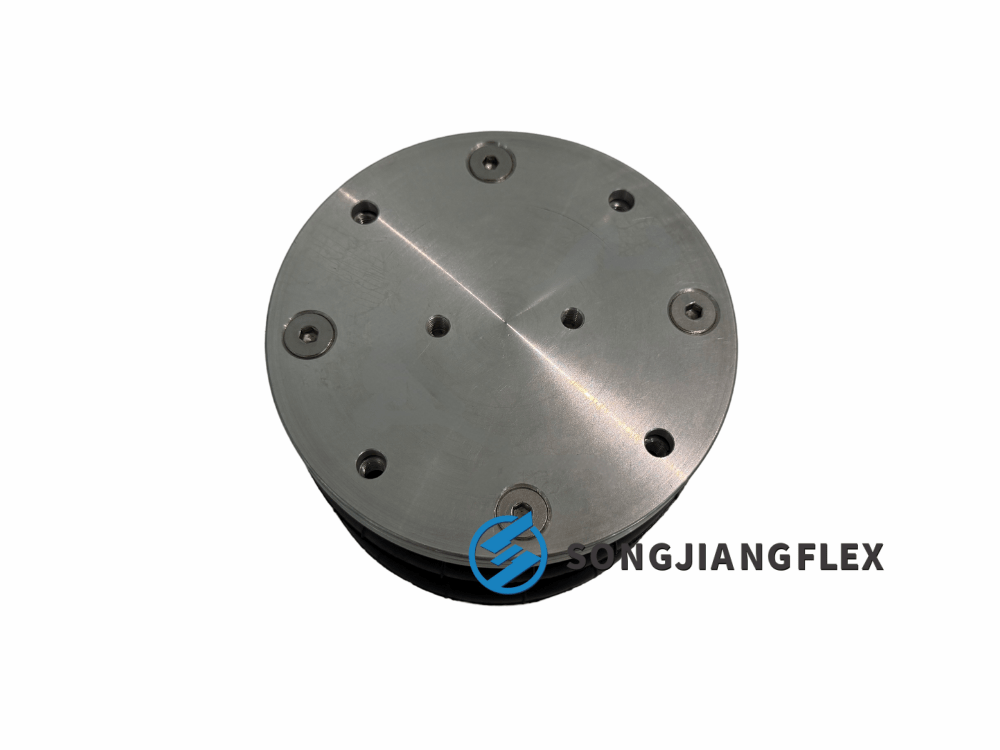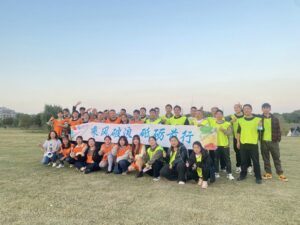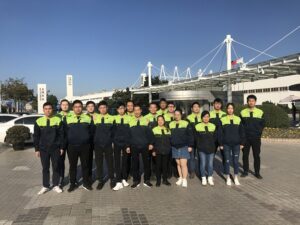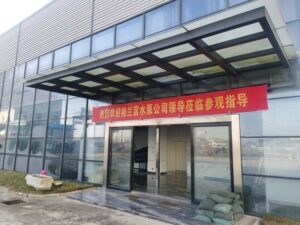How Are Air Spring Isolators Used in the Aerospace Industry?
Aircraft systems face severe vibration and noise challenges. Traditional isolation methods often fail to balance precision and weight. Air spring isolators provide lightweight, precise vibration control for reliable performance.
Air spring isolators in aerospace applications protect aircraft instruments, engine test stands, flight simulators, satellites, and avionics systems. They reduce vibration, control noise, preserve instrument accuracy, and optimize structural weight, ensuring overall system stability and long-term reliability.
Let’s explore specific aerospace applications and how air spring isolators deliver effective vibration isolation solutions.
1. How Do Air Spring Isolators Protect Aircraft Instruments?
Precision aircraft instruments, including navigation systems, inertial measurement units, and sensors, are highly sensitive to minor vibrations, which can compromise accuracy.
Air spring isolators effectively absorb both airborne and structural vibrations during flight, keeping instruments stable and operational while extending their service life.
Precision instruments are often mounted on cabin platforms or dedicated support frames. Adjustable air springs provide multi-directional vibration isolation, reducing high-frequency vibrations and low-frequency shocks. Applications include inertial navigation systems, flight control computers, radar components, and pressure sensors. Lightweight design minimizes overall load while maintaining long-term operational reliability and measurement accuracy.
2. How Can Air Spring Isolators Reduce Engine Test Stand Vibrations?
Engine test stands generate intense vibration that can affect measurement accuracy and nearby equipment safety.
Air spring isolators handle high loads while limiting vibration transmission, ensuring reliable engine test results.
In aerospace engine development and production, air springs are widely used on ground test stands. They isolate engine vibration, reduce noise exposure for personnel, and prevent damage to surrounding equipment. Adjustable stiffness and damping allow adaptation to different engine types, supporting precise testing and safe operation.
3. How Do Air Springs Improve Flight Simulator Stability?
Flight simulators require realistic flight conditions while protecting internal electronic systems from vibration interference.
Air spring isolation provides smooth support, stabilizing simulator motion and protecting both equipment and occupant comfort.
Air springs allow fine-tuning of stiffness and damping to simulate various flight states accurately. This improves training effectiveness and reduces long-term wear on simulator components. Multi-directional isolation ensures sensitive instruments remain unaffected by vibration, offering a more realistic and safe training environment.
4. How Are Air Spring Isolators Used in Satellite and Aerospace Ground Testing?
Satellites and spacecraft components are extremely sensitive to vibration during ground testing, where shocks could damage critical parts.
Air spring isolators reduce vibration and shock during ground testing, safeguarding satellite and spacecraft integrity.
Ground test platforms equipped with air springs provide multi-directional isolation for precision instruments. Adjustable load capacities accommodate different satellite sizes and weights, ensuring accurate test results. These systems protect onboard sensors, communication modules, and structural components from test-induced vibration, increasing reliability and performance of space missions.
5. How Do Air Spring Isolators Protect Avionics and Other Precision Electronics?
Avionics systems and other precision electronics are highly sensitive to vibration, which may cause signal errors or equipment failure.
Air spring isolators provide lightweight, effective vibration control, protecting avionics and precision instruments from flight and ground vibrations.
Air spring isolation systems are ideal for radar, communication, inertial measurement units, pressure sensors, and navigation instruments. Flexible installation options allow directional isolation on aircraft frames, platforms, or racks. Adjustable damping and load capacity ensure instruments maintain accuracy under diverse flight conditions, reducing failure risks and enhancing system reliability.
6. How Do Air Spring Isolators Enhance Precision Sensor Accuracy in Aircraft?
Flight instruments often rely on accelerometers, gyroscopes, and pressure sensors that require vibration-free operation for accurate readings.
Air spring isolators minimize vibrations transmitted to sensitive sensors, maintaining measurement accuracy and stable system performance.
Sensors installed on platforms or within instrument bays can be significantly affected by structural vibrations. Adjustable air springs provide isolation from both low-frequency shocks and high-frequency mechanical vibrations. Applications include altimeters, navigation gyros, and environmental sensors, ensuring that critical data remains precise during takeoff, landing, and turbulence.
7. Can Air Spring Isolators Reduce Cabin Noise and Improve Comfort?
Passenger cabins and cockpit areas experience vibration and noise from engines, air conditioning, and structural resonance.
Air spring isolators reduce vibration transmission to cabin structures, lowering noise levels and enhancing comfort for passengers and crew.
By isolating flooring, panels, and electronic equipment mounts, air springs help dampen mechanical vibrations. This not only protects sensitive cabin electronics but also improves passenger experience by reducing noise and micro-vibrations. Adjustable damping enables fine-tuning to different aircraft types, balancing comfort and system protection.
8. How Are Air Springs Applied in Aircraft Ground Support Equipment?
Ground support equipment such as fuel pumps, air conditioning units, and generators produce significant vibration that can affect operation and safety.
Air spring isolators protect ground support equipment by absorbing vibration, ensuring stable and safe operation.
Equipment installed in maintenance hangars or near sensitive areas can transfer vibrations to other devices. Air spring isolation reduces vibration propagation, prevents equipment wear, and maintains operational accuracy. Adjustable air springs allow customization for load capacity and damping, making them suitable for a variety of ground support machinery.
9. How Do Air Spring Isolators Protect Avionics During Takeoff and Landing?
Takeoff and landing generate high-magnitude vibrations that can impact sensitive avionics and precision instruments.
Air spring isolators mitigate extreme vibrations during these phases, protecting avionics and maintaining system reliability.
Aircraft frames and instrument racks equipped with air springs reduce vibration transmission. Adjustable stiffness settings enable isolation of avionics and critical electronics from shocks, preserving signal integrity and reducing the risk of system failure. This ensures continuous and reliable performance throughout critical flight operations.
10. How Can Air Spring Isolators Improve Longevity of Flight Test Equipment?
Flight test platforms, engine test rigs, and simulator equipment are subjected to repeated vibrations that can degrade components over time.
Air spring isolators extend the service life of test equipment by absorbing operational vibrations and minimizing structural stress.
Ground and airborne test systems experience repetitive loads, which can lead to premature wear or calibration drift. Air spring isolation cushions these vibrations, reducing mechanical fatigue. By customizing load capacity and damping, test equipment remains reliable over extended periods, ensuring accurate measurement, consistent performance, and reduced maintenance costs.
Summary
Air spring isolators provide precise, lightweight, and effective vibration control for aerospace applications, safeguarding instruments, electronics, and equipment while enhancing aircraft performance, safety, and reliability.






